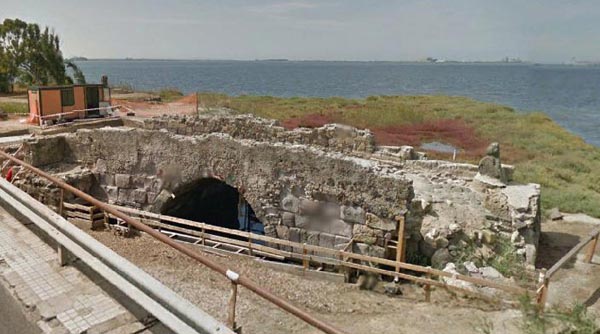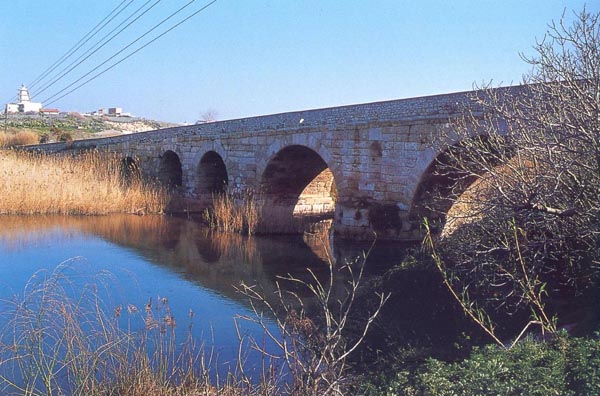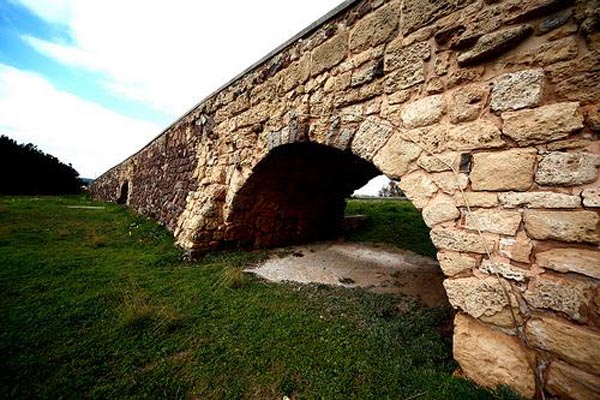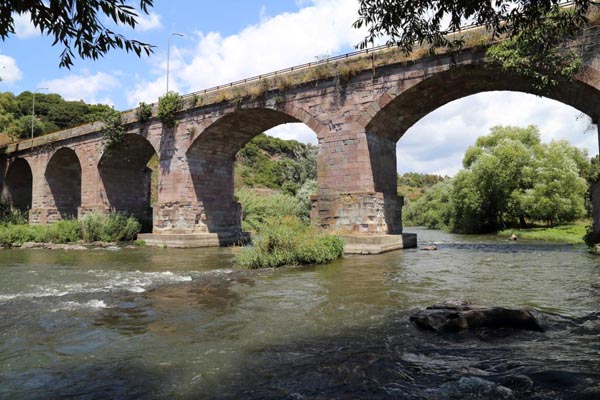Roman bridges
Construction of a road system connecting the north and south of Sardinia and crosswise, from East to West, the main towns, led to the construction of several bridges across the rivers.
The successful positioning of these bridges means they have been used up until almost modern times, with continual maintenance, adjustments and renovation (figs. 1-3); so it is quite difficult to recognise the structures that belonged to the Roman period.

Fig. 1 - Remains of the Roman bridge over the Tirso at the height of Santa Giusta, ancient Othoca (photo Archaeological Superintendence Cagliari)

Fig. 2 - Roman bridge of Porto Torres (from Olivo 2000, p. 184)

Fig. 3 - Sant’Antioco, bridge built on the remains of a Roman bridge (from flickr)
The current bridge of Fordongianus (fig. 4) covers the route of a Roman bridge of which only the pillars in opus quadratum are left, the same building structure as Baths I; so it can be assumed that the Baths were built in the Trajan period.

Fig. 4 - Bridge over Tirso at Fordongianus: the modern pillars are set on the base of the ancient Roman bridge (photo by Unicity S.p.A.).
Bibliografia
- F. FOIS, I ponti romani in Sardegna, Sassari 1964.

 VR
VR